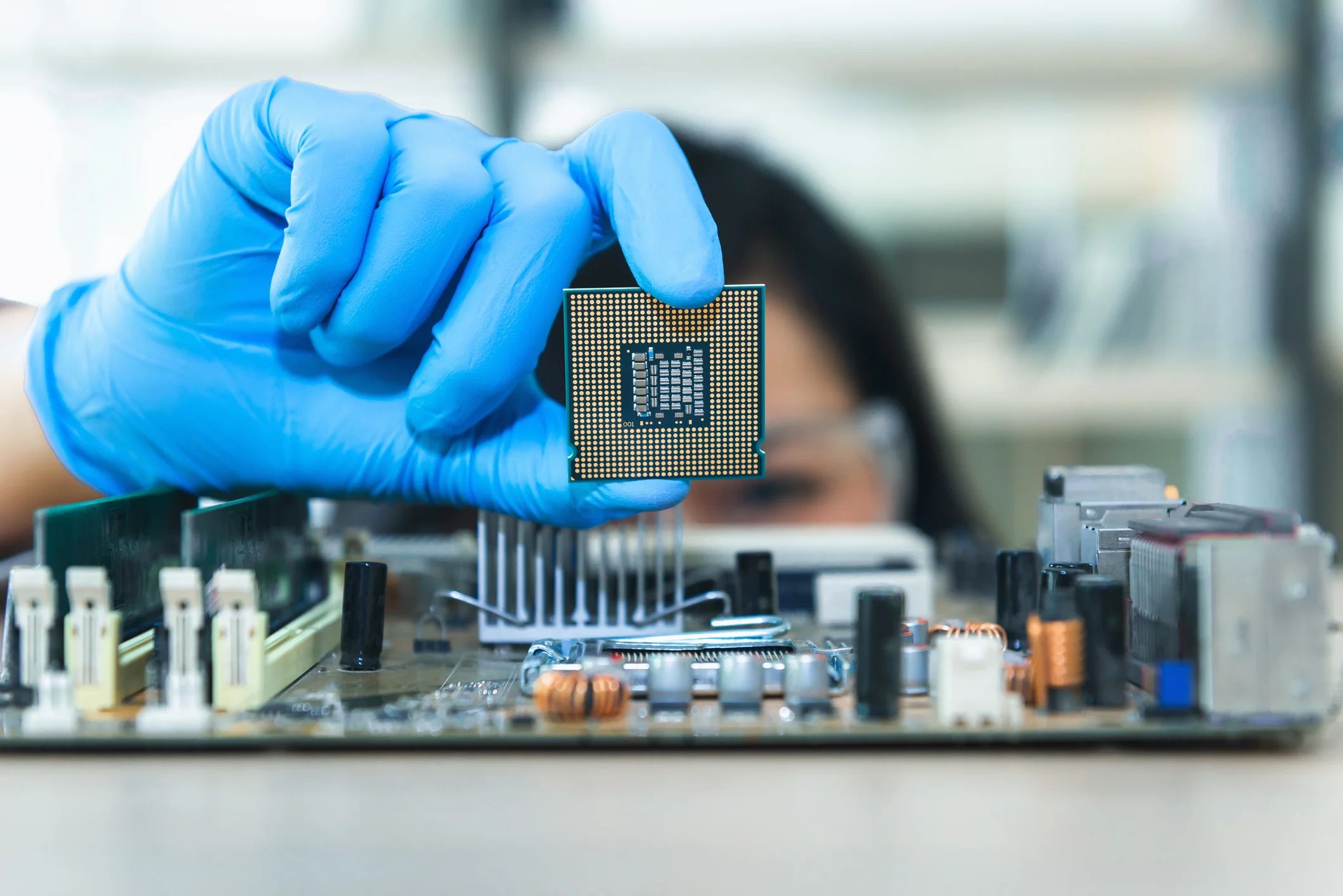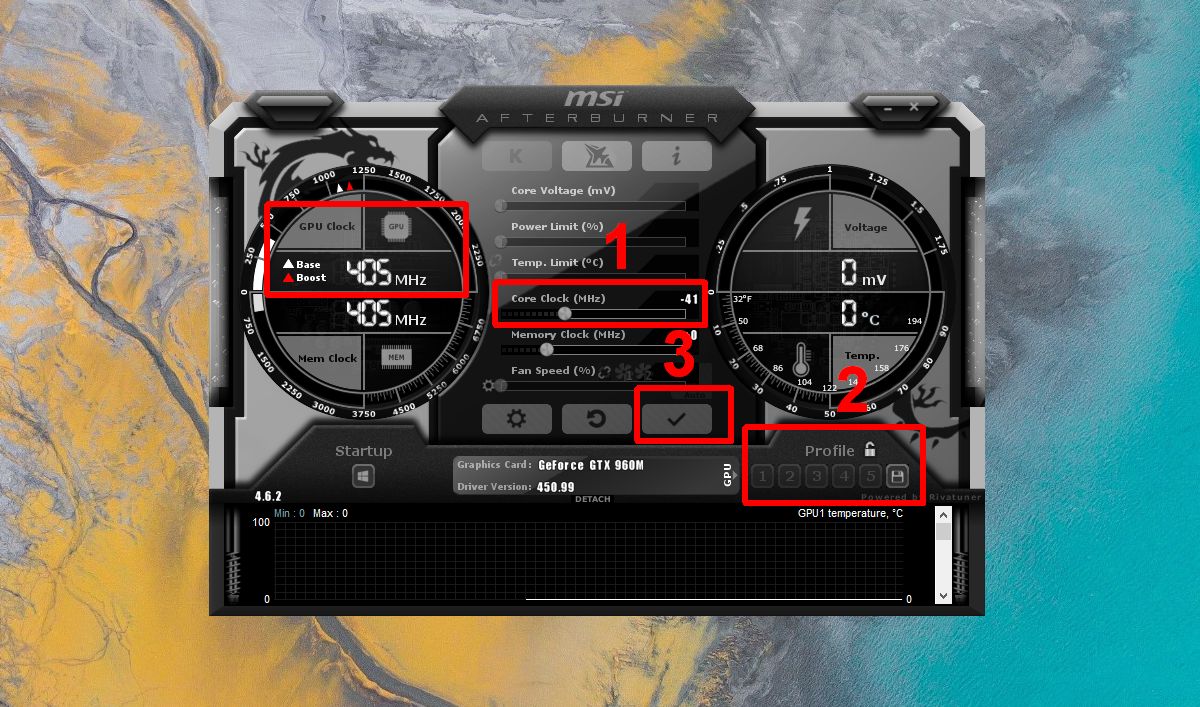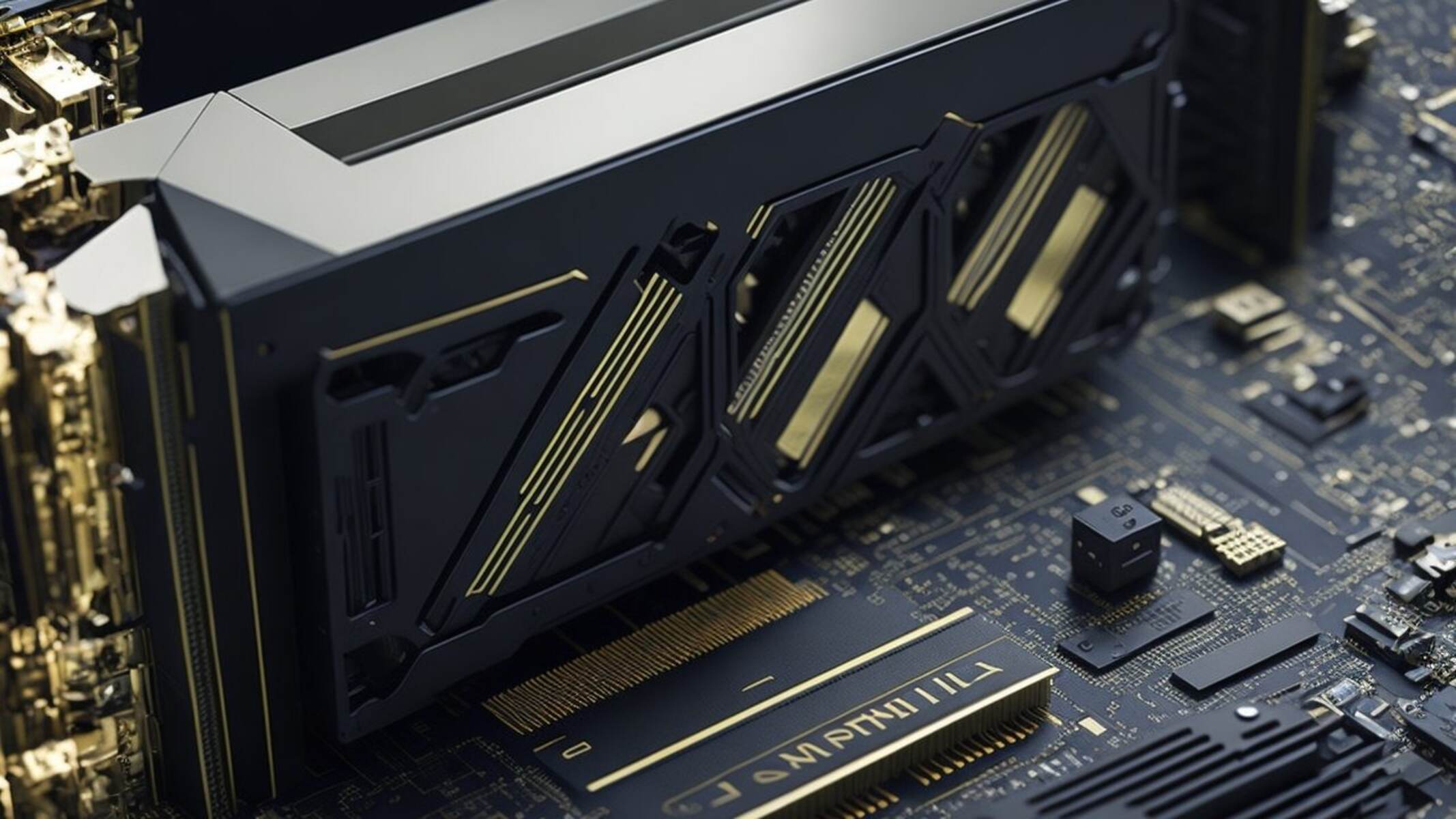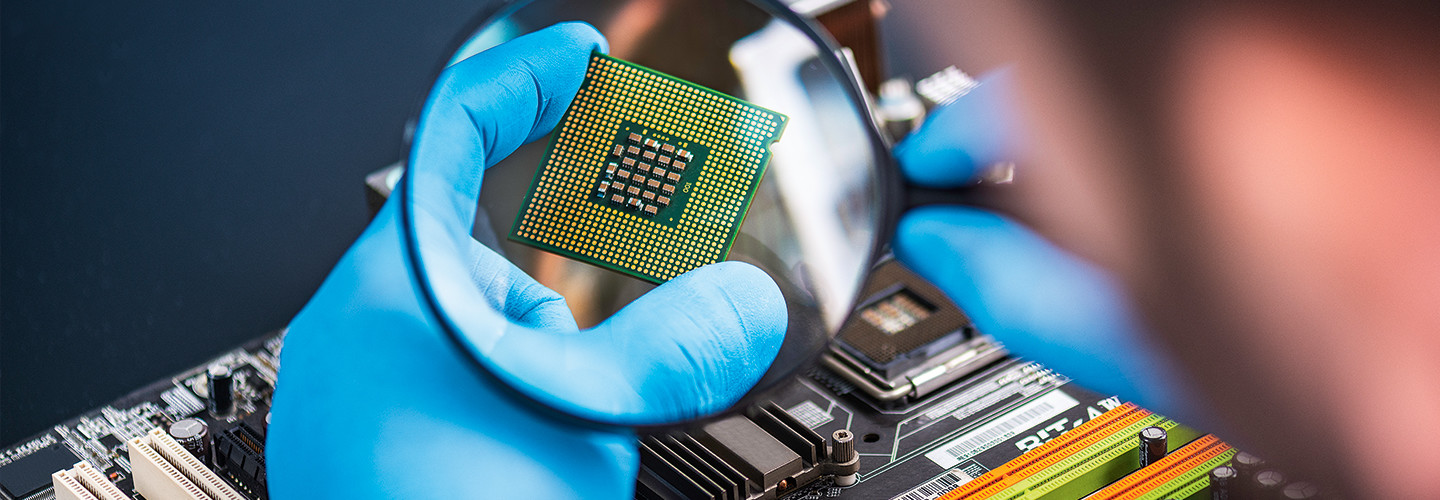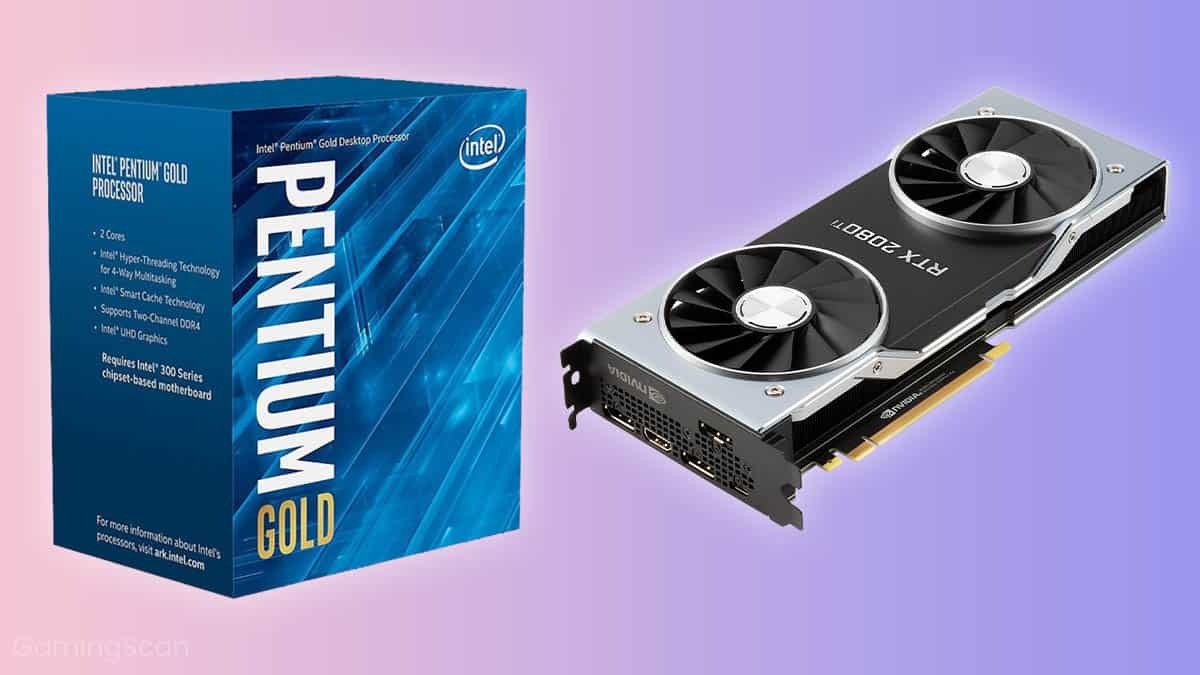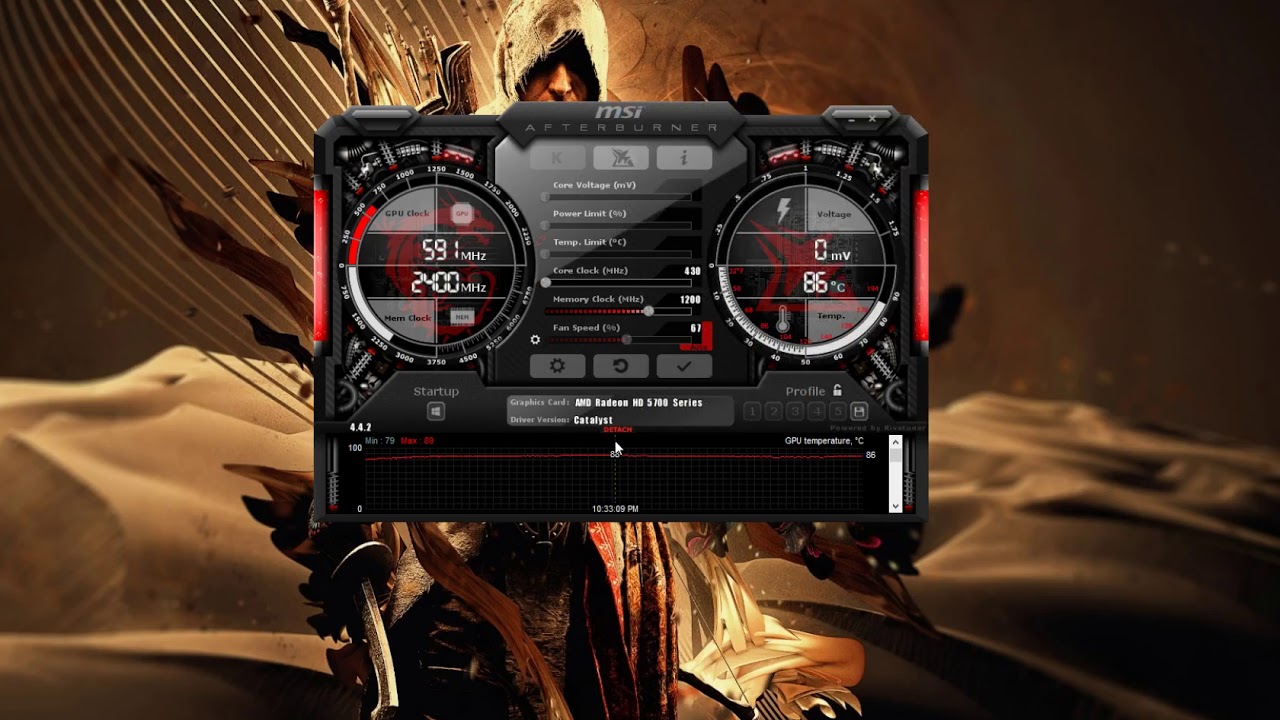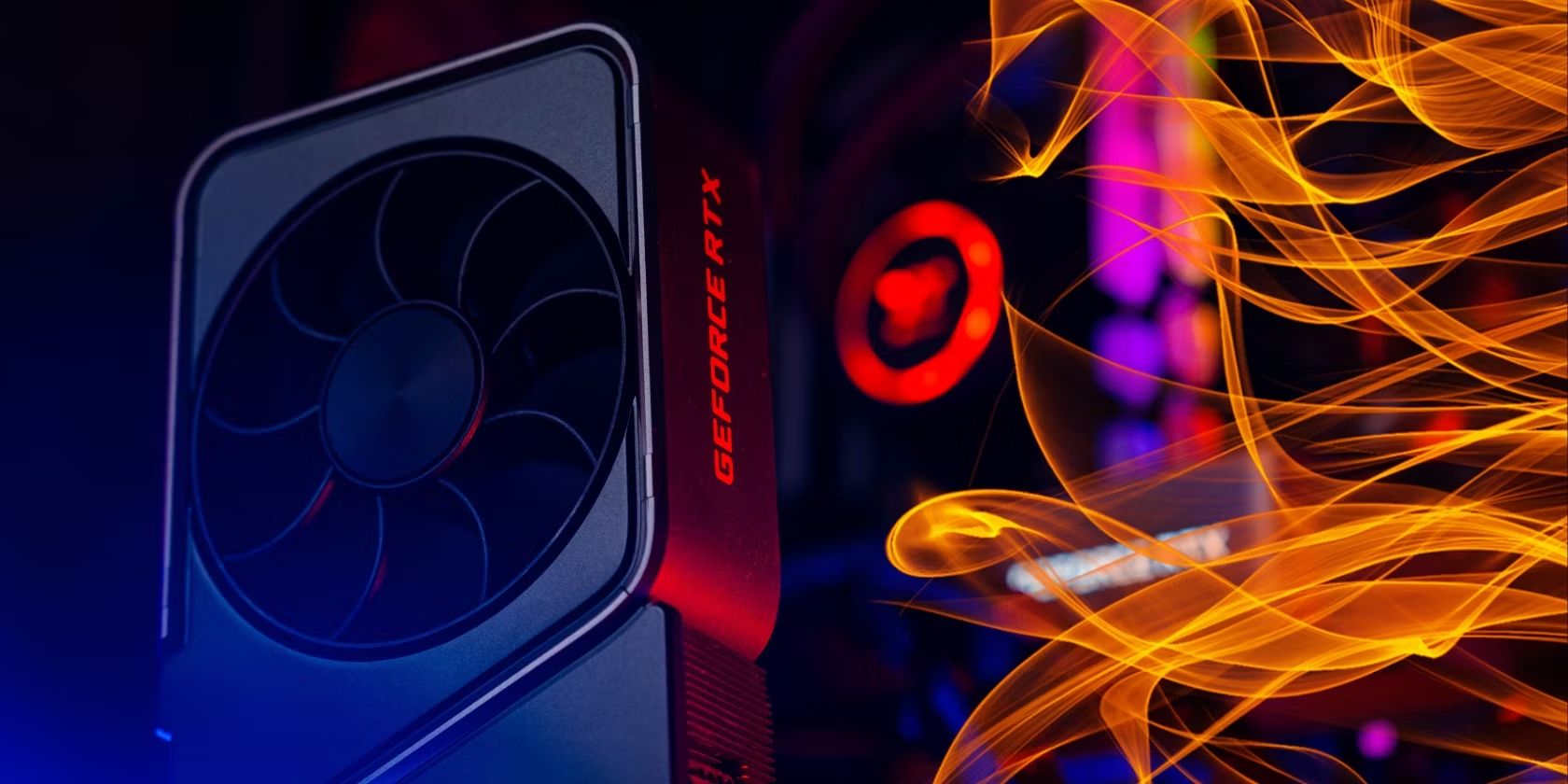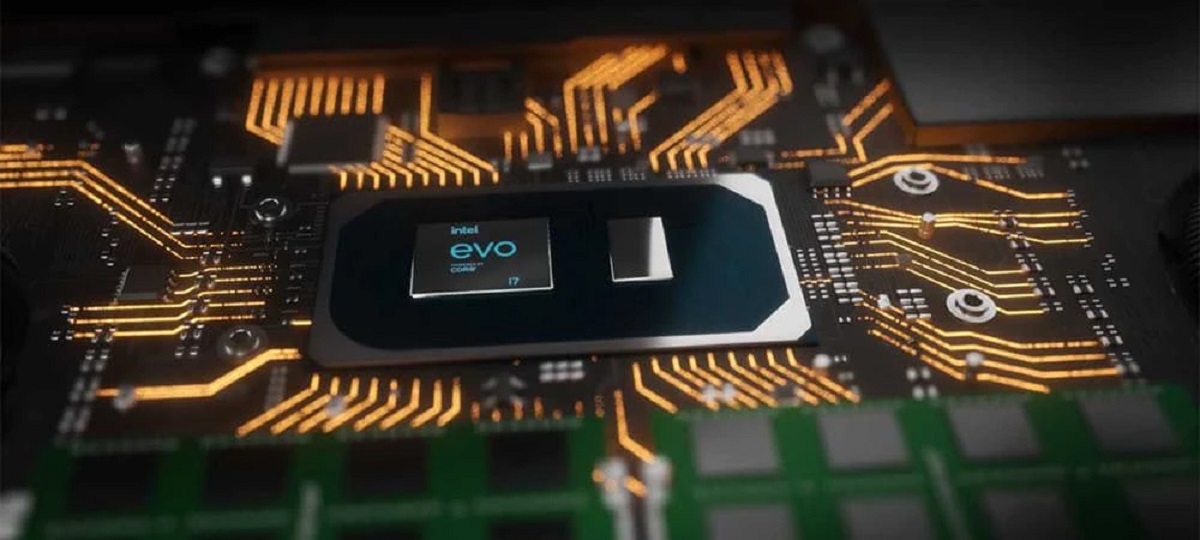Introduction
When it comes to optimizing your computer’s performance, one crucial aspect to consider is the Graphics Processing Unit (GPU). The GPU plays a vital role in rendering images, videos, and games, but it can also consume a significant amount of system resources. High GPU usage can lead to overheating, reduced system stability, and overall performance issues. Therefore, finding ways to decrease GPU usage can greatly improve your computer’s efficiency and prevent potential problems.
Reducing GPU usage not only enhances your computer’s performance but also allows you to allocate more resources to other applications and processes. This can be particularly beneficial for gamers, video editors, and graphic designers who rely heavily on their GPU’s capabilities. By implementing the right techniques and optimizations, you can strike a balance between performance and resource consumption, resulting in a smoother and more responsive computing experience.
In this article, we will discuss various methods to decrease GPU usage effectively. Whether you are experiencing performance issues while gaming, or your GPU heats up quickly, these techniques will help you alleviate the strain on your graphics card and optimize its performance. We will guide you through updating graphics drivers, optimizing graphics settings, monitoring and limiting FPS, improving airflow and cooling, enabling GPU acceleration, and more. Let’s dive in and explore these approaches in detail to help you decrease GPU usage and enhance your overall computing experience.
Update Graphics Drivers
One of the first steps to decrease GPU usage is to ensure your graphics drivers are up to date. Graphics drivers act as a bridge between your operating system and your GPU, allowing them to communicate effectively. Outdated or incompatible drivers can result in increased GPU usage and performance issues.
To update your graphics drivers, you can visit the website of the GPU manufacturer (such as NVIDIA or AMD) and download the latest driver version for your specific GPU model. Alternatively, you can use driver update software that automatically scans your system and installs the most recent drivers.
Updating your graphics drivers can bring several benefits. Firstly, it may include performance improvements and optimizations specifically designed for your GPU, reducing the strain on the graphics card. Additionally, updated drivers often fix bugs and compatibility issues that can lead to higher GPU usage. It’s recommended to regularly check for driver updates to ensure your GPU is running at its best.
Once you have downloaded the new driver software, follow the installation instructions provided by the manufacturer. Usually, this involves running an installation executable and following the prompts to complete the installation. After the installation process is complete, restart your computer to apply the changes properly.
Updating your graphics drivers can be a simple yet effective way to decrease GPU usage. By keeping your drivers up to date, you ensure optimal performance, stability, and compatibility with the latest software and games. We highly recommend making this a regular part of your system maintenance routine.
Reduce Graphics Settings
Another effective method to decrease GPU usage is to reduce the graphics settings in your applications and games. High-quality graphics settings can put a heavy load on your GPU, causing it to work harder and consume more resources. By adjusting these settings, you can strike a balance between performance and visual quality while reducing GPU usage.
Most modern applications and games provide graphical options that allow you to customize various aspects, such as texture quality, anti-aliasing, shadows, and effects. To decrease GPU usage, consider lowering these settings to their minimum or optimal levels. This will reduce the number of calculations and rendering required by the GPU, resulting in lower resource consumption.
Start by accessing the graphics settings within your application or game. Look for options such as “Graphics,” “Video Settings,” or “Options” to find the available customization options. Depending on the application or game, you may have sliders, drop-down menus, or checkboxes to adjust specific settings.
When reducing graphics settings, focus on options that have the biggest impact on GPU usage. For example, lowering the overall resolution can significantly decrease the workload on your GPU. Similarly, disabling or reducing options like anti-aliasing, ambient occlusion, and post-processing effects can have a noticeable effect on GPU usage.
It’s important to find a balance that suits your preferences and the capabilities of your GPU. While lowering graphics settings can reduce GPU usage, excessively low settings may result in a compromised visual experience. Experiment with different settings and monitor your GPU usage to find the optimal configuration that provides a good balance between performance and visuals.
Keep in mind that different applications and games may have different graphics settings options. Some may even offer presets, such as “Low,” “Medium,” and “High” settings. These presets are designed to optimize performance and visual quality, so consider using them as a starting point and making adjustments as necessary.
By reducing graphics settings in your applications and games, you can effectively decrease GPU usage and improve overall system performance. Remember to fine-tune these settings to find the perfect balance between visual quality and resource consumption for an optimized gaming or computing experience.
Close Unnecessary Background Applications
One common reason for high GPU usage is the presence of multiple background applications running simultaneously. These applications consume valuable system resources, including GPU power, even if you’re not actively using them. Closing unnecessary background applications can significantly reduce GPU usage and free up system resources for more important tasks.
To close unnecessary background applications, start by identifying which applications are running in the background. You can do this by opening the Task Manager on Windows or Activity Monitor on macOS. Look for applications that are consuming a high amount of GPU resources or those that you’re not currently using.
Right-click on the applications you want to close and select “End Task” or “Quit.” This will terminate the application and stop it from consuming GPU resources. Be cautious not to close any essential system processes or applications that are required for your computer to run properly.
Some applications may have settings that allow them to run in the background even when they’re closed. Check the settings of these applications and disable such features, if possible. This will ensure that they don’t consume unnecessary GPU resources when not in use.
Additionally, consider disabling any unnecessary startup programs. These are applications that automatically launch when you start your computer. They can contribute to high GPU usage and slow down your system. To manage startup programs, open the Task Manager (Windows) or System Preferences (macOS) and disable any applications that you don’t need to start automatically.
By closing unnecessary background applications and disabling startup programs, you can decrease GPU usage and improve overall system performance. This allows your GPU to focus its resources on the tasks that require them, resulting in a more efficient and responsive computing experience.
Monitor and Limit FPS
Monitoring and limiting the Frames Per Second (FPS) can help reduce GPU usage and improve system performance. FPS refers to the number of frames a graphics card can render per second, and a higher FPS often results in smoother gameplay or video playback. However, running your GPU at maximum FPS can also lead to increased GPU heat generation and resource consumption.
To monitor your FPS, you can use various third-party applications or built-in software that display real-time FPS statistics. These tools allow you to keep an eye on the GPU usage and adjust settings accordingly.
Once you have an idea of your current FPS, you can consider limiting it to a specific value. Most games and graphics-intensive applications have built-in settings or configuration files that allow you to cap the FPS. By limiting the FPS, you can reduce the strain on your GPU, resulting in lower GPU usage and potentially cooler temperatures.
The optimal FPS limit depends on your specific hardware and the application you’re using. Generally, a frame rate of 60 FPS is considered smooth and is sufficient for most users. However, if you have an older or less powerful GPU, you may need to set a lower FPS limit. Experiment with different FPS limits and monitor GPU usage to find the best balance between smooth gameplay and reduced GPU strain.
In addition to limiting FPS, you can also consider enabling vertical synchronization (VSync) in your graphics settings. VSync synchronizes the FPS with the refresh rate of your monitor, preventing the GPU from rendering frames that won’t be displayed. This can further reduce GPU usage and prevent unnecessary strain.
It’s worth mentioning that while limiting FPS can reduce GPU usage, it may also result in a slight decrease in visual smoothness. However, the trade-off is often worth it, especially if you’re experiencing high GPU temperatures or performance issues. Finding the right FPS limit that suits your preferences and hardware capabilities is key to optimizing GPU usage and overall system performance.
Improve Airflow and Cooling
Inadequate airflow and cooling can contribute to high GPU temperatures, which in turn can lead to increased GPU usage and potential performance issues. Taking steps to improve the airflow and cooling within your computer can significantly reduce GPU temperatures and decrease resource consumption.
Start by ensuring that your computer’s fans and vents are free from dust and debris. Over time, dust can accumulate and clog the airflow, causing the GPU and other components to overheat. Regularly clean the fans and vents using compressed air or a soft brush to remove any buildup and improve airflow.
In addition to cleaning, consider adding extra case fans to your system. These additional fans can improve overall airflow and help dissipate heat more efficiently. Position the fans strategically, directing airflow towards the GPU and other thermal hotspots within the computer.
Another effective way to enhance cooling is by installing an aftermarket GPU cooler or upgrading your computer’s stock cooler. These coolers provide better heat dissipation and can maintain lower GPU temperatures, resulting in reduced resource consumption.
If you are experiencing high GPU temperatures despite cleaning and improving airflow, you may consider reapplying thermal paste to your GPU. Over time, the thermal paste can dry out and become less effective at transferring heat from the GPU to the cooler. By carefully removing the old thermal paste and applying fresh paste, you can improve heat dissipation and lower GPU temperatures.
Additionally, using software tools can help control the GPU fan speed and monitor GPU temperatures. These tools allow you to adjust fan speeds manually or set automated fan curves based on temperature thresholds. By optimizing fan speeds, you can maintain lower GPU temperatures, decrease resource consumption, and prevent overheating.
Improving airflow and cooling is crucial to reducing GPU usage and maintaining optimal performance. By keeping your GPU cool and preventing overheating, you can ensure that it operates efficiently, prolong its lifespan, and minimize the strain on system resources.
Enable GPU Acceleration
Enabling GPU acceleration can offload certain tasks from the CPU to the GPU, resulting in decreased CPU usage and potentially reducing overall GPU usage as well. GPU acceleration is particularly beneficial for applications that involve intensive calculations or graphics rendering, such as video editing software and 3D modeling programs.
To enable GPU acceleration, check the settings of the specific application or software you are using. Look for options like “Hardware Acceleration” or “GPU Rendering” and ensure they are turned on. In some cases, enabling GPU acceleration may require updating your software to the latest version, as older versions may not support this feature.
GPU acceleration can provide significant performance improvements, especially when working on tasks that involve complex computations or rendering. By utilizing the parallel processing power of the GPU, these tasks can be completed more efficiently, reducing overall system resource usage.
However, it’s important to note that not all applications or software support GPU acceleration. Before enabling this feature, ensure that your specific software or application is compatible and optimized for GPU acceleration.
In addition, graphics drivers play a crucial role in enabling and supporting GPU acceleration. Ensure that you have the latest drivers installed for your GPU, as outdated drivers can cause compatibility issues and hinder the performance benefits of GPU acceleration.
By enabling GPU acceleration, you can offload CPU tasks to your GPU, reducing CPU usage and potentially decreasing overall GPU usage as well. This can result in smoother performance, improved responsiveness, and more efficient resource utilization.
Use Optimized Graphics Settings
Using optimized graphics settings is an effective way to decrease GPU usage while maintaining good visual quality in your applications and games. Many software and games offer built-in optimization options or presets that can automatically adjust graphics settings based on your hardware capabilities.
To access optimized graphics settings, look for options within the application or game’s settings menu. You may find presets such as “Low,” “Medium,” or “High” settings that are tailored to provide the best performance for your specific hardware configuration.
When selecting optimized settings, consider the limitations of your GPU and prioritize performance over visual effects. Lowering settings such as texture quality, shadow resolution, and particle effects can significantly decrease GPU usage while still maintaining an enjoyable gaming or computing experience.
It’s worth noting that optimized settings may vary from one application or game to another, as different software may have unique optimizations based on their specific requirements and target audience. Experiment with different presets or custom settings to find the optimal balance between performance and visual quality.
Furthermore, developers often release updates that include performance optimizations for specific hardware configurations. It is beneficial to keep your applications and games up to date to take advantage of these improvements and ensure optimal GPU usage.
If your applications or games do not have built-in optimized settings, you can manually adjust the graphics settings to find the ideal balance. Consider lowering options like resolution, anti-aliasing, and post-processing effects to reduce GPU usage without compromising visual quality significantly.
By using optimized graphics settings, both pre-configured and customized, you can achieve a balance between performance and visual quality while decreasing GPU usage. Adjusting these settings based on your hardware capabilities can result in smoother performance and a more efficient utilization of system resources.
Disable Hardware Acceleration in Software
Disabling hardware acceleration in software can help reduce GPU usage and improve overall system performance. Hardware acceleration utilizes the GPU to accelerate certain tasks within software applications, such as video playback or rendering. While this can provide performance benefits, it can also increase GPU usage and contribute to resource consumption.
To disable hardware acceleration, access the settings or preferences menu of the specific software application. Look for an option related to hardware acceleration and toggle it off or disable it. The location and wording of this option may vary depending on the software you are using.
Disabling hardware acceleration transfers the workload from the GPU to the CPU, which may result in slightly higher CPU usage. However, if your GPU is already under heavy load or experiencing performance issues, disabling hardware acceleration can help alleviate the strain on the GPU and distribute the workload more evenly across system resources.
It’s important to note that certain software applications heavily rely on hardware acceleration for optimal performance. Disabling hardware acceleration may negatively impact their functionality or cause diminished performance. In such cases, it’s recommended to experiment with different settings or consult the software’s documentation or support resources for guidance on optimizing performance without disabling hardware acceleration completely.
Additionally, disabling hardware acceleration may not be available in all software applications, as it depends on the specific implementation and capabilities of the software. If you do not find an option to disable hardware acceleration, it’s likely that the software does not provide this feature.
By disabling hardware acceleration in software applications, you can reduce GPU usage and potentially improve overall system performance. This can be particularly useful if you are experiencing high GPU temperatures, performance issues, or if you want to allocate system resources more efficiently.
Limit Screen Resolution and Refresh Rate
Limiting the screen resolution and refresh rate can be an effective way to decrease GPU usage. Higher resolutions and refresh rates require more GPU power to render and display images, which can put a significant strain on the graphics card and result in increased resource consumption.
To limit the screen resolution, access the display settings on your computer or within the graphics control panel of your GPU’s drivers. Reduce the resolution to a lower value that still provides a satisfactory level of clarity and visibility for your needs. Lower screen resolutions require fewer resources to render, which effectively reduces the workload on the GPU.
It’s important to find a balance between resolution and visual quality. Select a resolution that maintains a good level of sharpness and clarity for your screen size while reducing the strain on the GPU. Experiment with different resolutions to find the optimal balance between performance and visual experience.
Similarly, reducing the refresh rate of your monitor can also help decrease GPU usage. The refresh rate refers to the number of times per second the monitor updates the displayed image. Lowering the refresh rate, typically from a higher value such as 144Hz down to 60Hz or 30Hz, reduces the number of frames the GPU needs to render, resulting in lower resource consumption.
To adjust the refresh rate, access the display settings or monitor settings on your computer. Select a lower refresh rate option from the available settings. Keep in mind that not all monitors support lower refresh rates, so make sure to check the specifications of your monitor before making changes.
It’s worth mentioning that reducing screen resolution and refresh rate may result in a slight decrease in visual quality or smoothness. However, the trade-off can greatly benefit GPU usage, especially if you are experiencing high temperatures, performance issues, or if your GPU is struggling to handle high-resolution or high-refresh-rate content.
By limiting screen resolution and refresh rate, you can effectively decrease GPU usage and improve overall system performance. This approach allows the graphics card to allocate resources more efficiently and may result in cooler temperatures, improved stability, and better utilization of system resources.
Conclusion
Decreasing GPU usage is essential for optimizing system performance, improving stability, and enhancing the overall computing experience. By implementing the strategies discussed in this article, you can effectively reduce GPU usage and ensure a smoother and more efficient operation of your computer.
Updating graphics drivers is a crucial step to maintain optimal GPU performance and compatibility. By keeping your drivers up to date, you can take advantage of performance improvements and bug fixes specifically designed for your GPU model.
Reducing graphics settings, closing unnecessary background applications, and monitoring and limiting FPS are all effective methods to decrease GPU usage. Adjusting graphics settings to strike a balance between performance and visual quality, closing resource-consuming background applications, and setting an optimal FPS limit can significantly alleviate strain on the GPU.
Improving airflow and cooling can also play a vital role in reducing GPU usage. Ensuring proper airflow, cleaning fans and vents regularly, and adding extra cooling solutions can help maintain lower GPU temperatures and improve overall system stability.
Enabling GPU acceleration when available can offload tasks from the CPU to the GPU, reducing overall GPU usage and improving performance. It is essential to ensure compatibility and update your software and applications to take advantage of GPU acceleration benefits.
Disabling hardware acceleration in software and limiting screen resolution and refresh rate are additional strategies to decrease GPU usage. These approaches can help distribute the workload across system resources more efficiently and prevent the GPU from being unnecessarily burdened.
By implementing these techniques, you can effectively decrease GPU usage, improve system performance, and enhance the overall computing experience. Experiment with different strategies and find the combination that works best for your specific hardware configuration and usage requirements. Enjoy a more optimized and efficient computing experience with reduced GPU usage.







